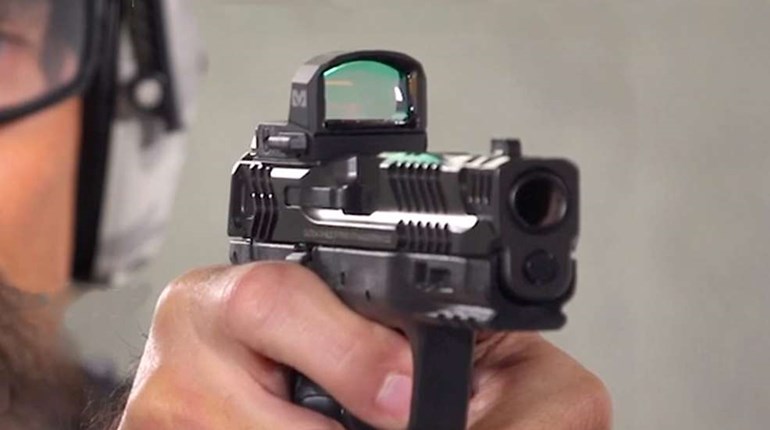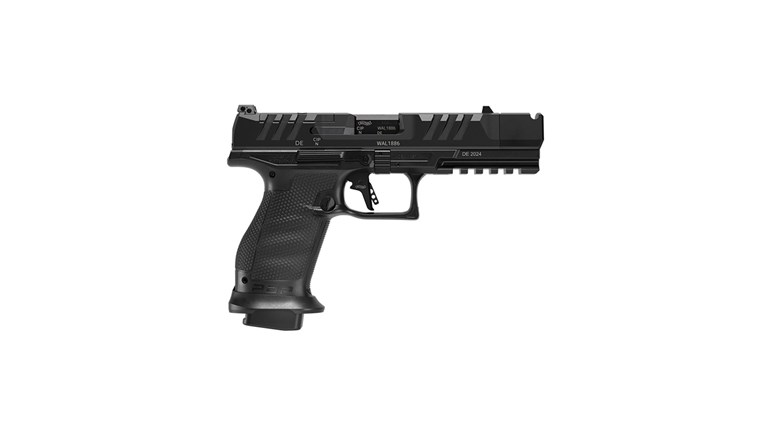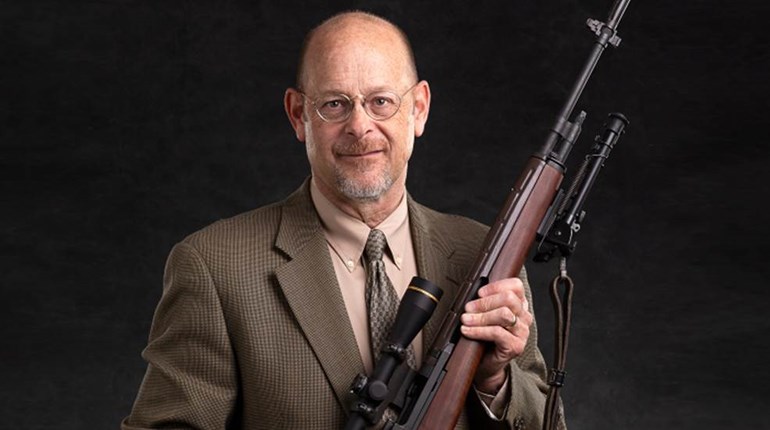
We often encourage Carry Lifers to find some mode of competition as a way to practice. The reason why, we hope, is amply clear: As a method for debugging your technique, few things are as reliable. Especially if you supplement competition with good and continuing instruction, both your skills and your enjoyment of shooting as a hobby will grow.
Feedback gets to us on this recommendation on a routine basis, most of it along the hoped-for lines: Folks report they are markedly safer in their firearm handling, often with a codicil along the lines of, “I didn’t know what I didn’t know!” Now and again, a negative of sorts reaches us too, though it is a small one and easily mended. This falls under the broad heading of unfamiliarity with the range commands that govern most venues. No surprise here, really: There’s no ready way anyone could be expected to know them without previous competition experience. We’re pretty sure that’s a “tautology,” or as our wise Pop used to say: “A you-can’t-go-until-you’ve-been school.” Either way, it’s a barrier we intend to beat down somewhat, if not altogether eliminate.
The commands have a crucial predecessor, however, and it is generally the source of near-equal misunderstanding until it has been experienced. Unless you are under the express, individual direction of a range officer (RO), other competitors and match staff will expect you to know that you must not handle your firearm for any reason. Ammunition, magazines, speed loaders, belt gear—indeed, any other accouterment—are fair game, just no firearms.
Folks report they are markedly safer in their firearm handling, often with a codicil along the lines of “I didn’t know what I didn’t know!”The one exception to this is a designated safety area. In these, no ammunition, ammunition proxies or magazines (snap caps, action proving dummies, etc.) can be handled. But dry draws, repairs, and cleaning are all legal and safe. You also won’t need to be under RO instruction for safety area activities. Our shorthand for this one-or-the-other-but-never-both state of affairs is “the lockout.” We know of nothing that rivals it for building in safety.
In their turn—and proceeding from the presumption of the holstered (or cased) but empty firearm—the range commands subsequently govern shooter actions through a course of fire. Take a little time with these before you compete, and it’s one less thing to think about when it comes shooting time.
Make Ready
This command—not the beep of the timer—is where your course of fire actually commences. Implicit in it are additional presumptions beyond an empty firearm: that loading devices are on your person and charged, and that eye and hearing protection are handy (if not already in place). It also means that you can start handling your firearm in preparation for actual shooting; loading, in other words.
Most courses of fire (or stages, as they are usually called) will have a designated start position and shooter orientation, and you’ll almost always need to be within a step of this location before you’ll receive the command. Exceptions to this positioning may be directed by the RO to enhance safety. (An example is frequently seen for pistol caliber carbines—uncasing may occur where the competitor expects to finish the stage so his or her case will not require retrieval.) Don’t figure you can move around, however—if you find you must, ask the RO for permission.
There are a couple of crucial things to remember here. First, make no assumptions—if you don’t understand any instruction, ask before you touch your firearm. You aren’t yet on the clock, after all, so there’s no hurry. Next, remember that all the other safety rules are now in force, especially things like the 180 rule (letting your muzzle wander up range, even with a still empty firearm, will get you DQ’d sans apologies) and sweeping or flagging are potential problems.
Finally, don’t leave prep actions that can be done prior to “make ready” undone. Your stage plan should be clear in your head, your magazines should be in position and loaded, and garment changes (doffing an outer jacket in cold weather, say) should all be ready/complete. This isn’t a matter of simple politeness to other competitors and respectfulness to match officials. It has an unappreciated effect on ROs: If you arrive at the start ready to “go to work,” you are far less likely to put ROs in “uh-oh” mode. While they’re trained to give every shooter the same level of scrutiny to ensure fairness, it’s a matter of human nature that unexpected fiddling elevates their scrutiny. That’s never a good idea.
The end of “make ready” is generally on you. When you and your firearm are positioned (the latter usually, but not always, loaded and back in your holster) as required by the stage description, you’ll receive the next command.
Are You Ready?
You won’t generally hear this until you have finished what the RO expects to see as preparation: Firearm loaded, a round chambered, and the specified position of all elements—feet “on Xs,” “hands at sides,” “holding the stuffed, one-eared, three-legged warthog between your knees,” whatever—are complete according to the stage description.
Take a little time with these before you compete, and it’s one less thing to think about when it comes shooting time.Here, silence betokens consent—you don’t have to answer unless you aren’t ready. In that case, speak right up; this is not the time for any hurry-up fixes. Take the time to be fully and safely prepared to start.
It marginally speeds things along if you do nod, or reply in the affirmative that you’re ready. ROs will appreciate this as a general rule.
Standby
Competitive shooting’s version of NASA’s “ignition,” this means “liftoff” will happen in between one and four seconds with the beeeeeep of the timer. As soon as you hear that signal, forget your plan, inventively bobble each reload, put a couple of shots into the hard cover—or run by a target altogether—and say, “damn it” softly but clearly as you finish engaging the last target. Or at least that’s how we do it. But a better version is to safely, accurately—and eventually, quickly—engage targets in accordance with the written stage description.
It seems all but impossible, given the meticulous nature of the other preparative steps, but things can still go wrong here. People with hearing issues and/or those who double-protect may not hear the beep (and why you’ll see experienced ROs hold the timer right over the center of the shooter’s head as a precaution). If you’re in either bunch, don’t be shy about asking for a test beep. We’ve seen extreme cases where the RO taps the shooter as they key the beep for a tactile “go” signal.
Occasionally, shooters are so focused on their plan that you’ll see an example of auditory exclusion—their brain doesn’t process the signal the ears hear.
Failure to respond to the timer’s beep carries no penalty. The RO will back up to “Are you ready?” and initiate the start signal again.
Stop
This is the easiest and most important command, and for utterly obvious reasons. Something is wrong—don’t assume it’s you—and the RO has terminated your engagement. Your only responsibility is to cease all movement, and especially shooting, as completely and rapidly as possible. Don’t diagnose or otherwise try to fix anything; just stop.
It’s true that this is bad news sometimes. You may indeed have committed a safety infraction, which means your day is over. It happens to everybody sooner or later, so there’s no cause to be embarrassed or ashamed—hopefully, something vastly worse has been prevented before it had a chance to happen, or, at least, to get more consequential.
This is also why it is so important to keep track of muzzle direction, and why the sweeping and 180 rules are still in play.But while your response needs to be the same—think “freeze tag”—it may not be you, and probably more often, isn’t. An unrepaired target, a fallen piece of steel, a rambling 8-year-old with his or her head bobbing up over the berm where it doesn’t belong can all bring on the command to halt, and you won’t be accountable. We guarantee that you’ll get that sinking feeling in the pit of your stomach, but take a breath. In these and similar cases, the stage will be reset and you’ll get a reshoot.
You’ll even see this command issued in error now and again, but think it through before you get irked if it happens to you: A carefully trained RO saw something that didn’t make sense, and applied a “better safe than sorry” razor to the situation. What about this, precisely, is a bad thing except in terms of inconvenience? Given the hostility shooting faces in many arenas, the answer is clear: “Nothing.” But it also means you should have some extra ammunition available, as it will bump up your round count.
It’s a tremendous credit to most of the competition venues that you won’t hear of this all that often. Stage equipment has improved to the point where failures are rare, and good stage design helps those who pay attention stay out of most sorts of “Stop!” trouble. For (the few) others, that’s a part of the education competition provides. (Perhaps not a moment too soon?)
Unload And Show Clear or If You Are Finished, Unload And Show Clear
This is given either when the shooter stops at the completion of a stage, or after a "stop" command is issued. Your obligation is to remove the ammunition source from your firearm and subsequently eject or remove any remaining unfired round(s). When this is complete, you should display the firearm, muzzle still downrange and toward the backstop, so that the RO can see that the entire feed way and action are clear. For autoloaders, this is slide locked or held open, and for revolvers, empty cylinder swung free of the frame.
You’ll see some spiffy maneuvers here on occasion—the catching of the chambered round as it is ejected comes to mind—but this is priority zippo in our minds. If everything else is in safe and repeatable order, fine, but don’t waste time practicing this at the expense of anything else. Seriously: Decent balloon animals should make it into your repertoire before the round-catching business does.
If Clear, Hammer Down, Holster or If Clear, Cylinder Closed, Holster
Guess which of these applies to semi-autos, and which to revolvers. OK, dumb question—moving on.
Note here that the “hammer down” part of this is not permissible by physically lowering the hammer by hand/finger, nor by a decocker. The hammer must be made to fall by action of the trigger, and prior to re-holstering (and just one more reason why magazine disconnects are such a dopey idea). Because the entire feed way is visible in a revolver, a press of the trigger and hammer fall is not required.
Though it’s rare, shooters occasionally discover that their firearm isn’t clear when the theoretically final press of the trigger results in “bang.” An extractor or ejector failure is a very rare cause for this, and you’ll surmise how the unexpected (and alarming) shot most often happens: Removing the ammunition source and chamber clearing occur in reverse order. The chambered round is ejected all right, but another unintentionally loaded from the still-in-place magazine. The magazine is then dutifully removed, but leaves a round in the chamber. “Press” will inevitably equal “bang” in this circumstance.
This is also why it is so important to keep track of muzzle direction, and why the sweeping and 180 rules are still in play. If you execute the final step expecting “click” but getting “bang,” only proper muzzle direction (into the berm or backstop) will deposit the bullet safely. Keep in mind that a shot fired under these circumstances results in a match disqualification no matter where the bullet strikes.
Reduced to the barest essentials, unloading and showing clear means knowing that any mag or loading device is out of the firearm, before watching the bullet clear the feed way. “Clear” means altogether empty, and therefore safe to holster.
Range Is Clear
The RO issues this command when a “safed” firearm is returned to a holster or case. It signals the end of your permission to handle your firearm (unless redirected to do so, or your entry to a labeled safety area). The command also signals the start of scoring and resetting the stage for subsequent shooters.
Like most other things, the correct response to the range commands is learned first by knowing what they are—done, we hope—and then by practicing them. For this, you needn’t wait for a match opportunity. A training partner, or better yet a chum who knows them, is a great resource. And commands can certainly be practiced “dry;” snap caps work just fine to enforce the rigor that will be required later on. When match day rolls around, you’ll have plenty of other things to think about, so don’t underestimate the value of practice runs before a real buzzer goes off.
Now Carry on.
Frank Winn has been studying arms and their relationship to tyranny, meaningful liberty and personal security all his adult life. He has been a firearms safety/shooting instructor for more than 20 years, and earned state, regional and national titles in several competitive disciplines.

































